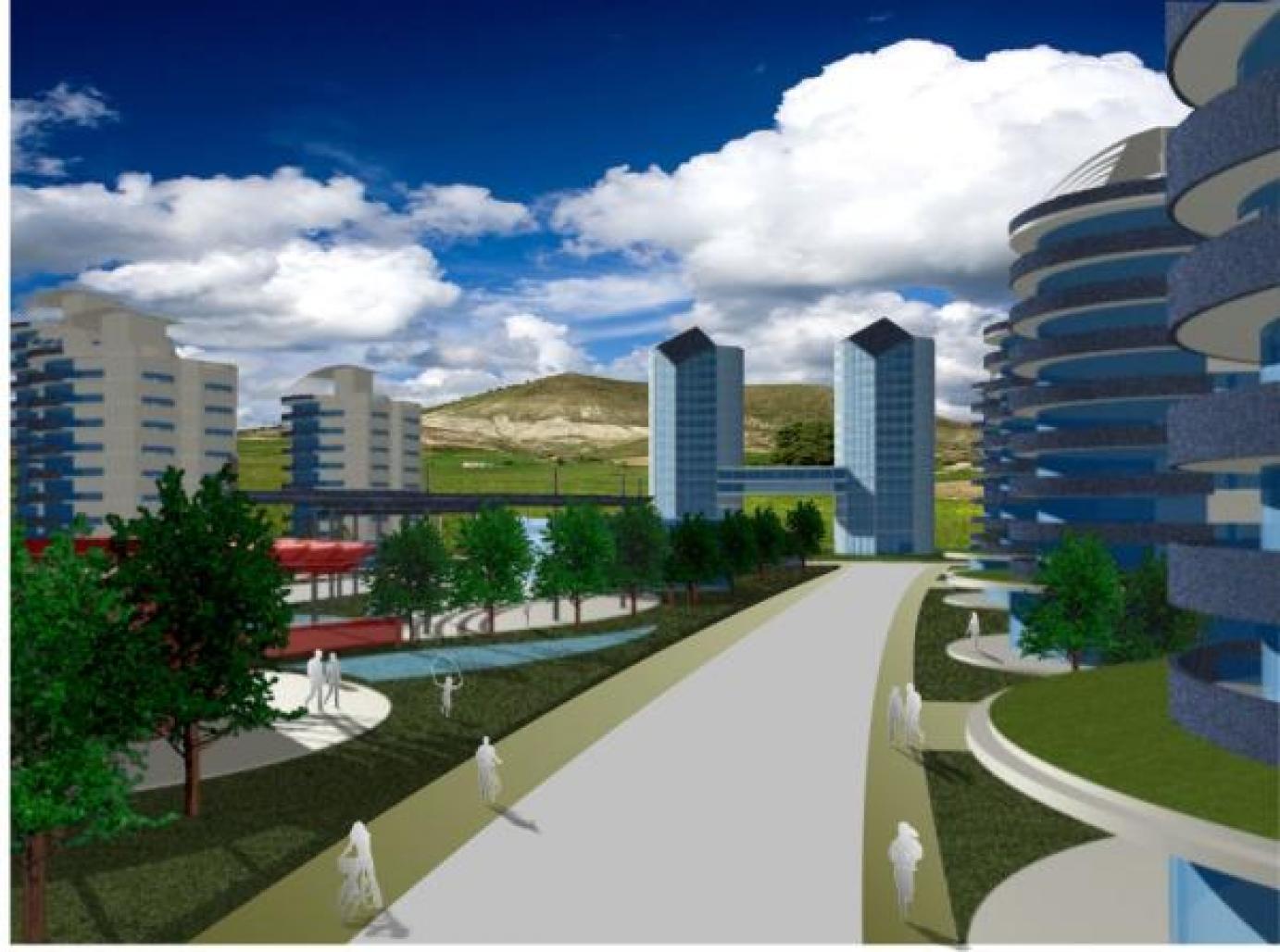Project information:
City: Stolnik; Country: Bulgaria; Type: Urban Planning
Project description
The prosal responds to the necessity to build a small city on the outskirts of Sofia, generating and own economy, introducing green technology and integrate resource like systems elements that provoque the minimun impact on their sorroundings.
Periurban towns, towards the south of Sofia were constructed on a fertile agricultural earth producing a change of radical use from rurally to urban {becoming dormitory cities}. Urban agriculture has been an essential element of the Bulgarian life for centuries.
The project objetive is dynamic being, whom the rural integrates urban life, promoting it with a sustainable agroecology interrelating the enviroment, the economy and the society.
Center of urban ecological agriculture located next to the urban centers establishing zones of culture on medium scale.
The master plan concept compromises an integrated this, which is in the long time effect, is achieved by the interlinking of the individual design elements. Disregarding a single element would therefore damage the overall balance and have a detrimental effect.
This sustainable city will encourage people to walk instead of drive, give facilities for recycling and optimizing the use of the energy with the bioclimate design buildings
The urban planning morphology responds to the maximun solar advantage with this base the bioclimate architecture is viable for the facility of being able to integrate the energies of the environment.
Initial Approach: the way of receiving the environment proposes across ecological corridors inside the same city.
At urban level, the greater facade generates accesibility to different types from circulation: pedestrian, car traffic and secondary ways.
The city grows around a center of social and commercial activity, conected by public transport, constituting itself in centers around which the districts grow.
The compact nodes of mixed use diminish the displacement necessities and generate alive sustainable neighborhoods, this way conforms a network of districts to it’s owns parks and public spaces. This configuration offers work and services within reach of the community, reducing therefore the necessity to move daily in automobile, recovering the city like ideal habitat based on the community with a type of urban structure that responds to a cultural variety.
2008










